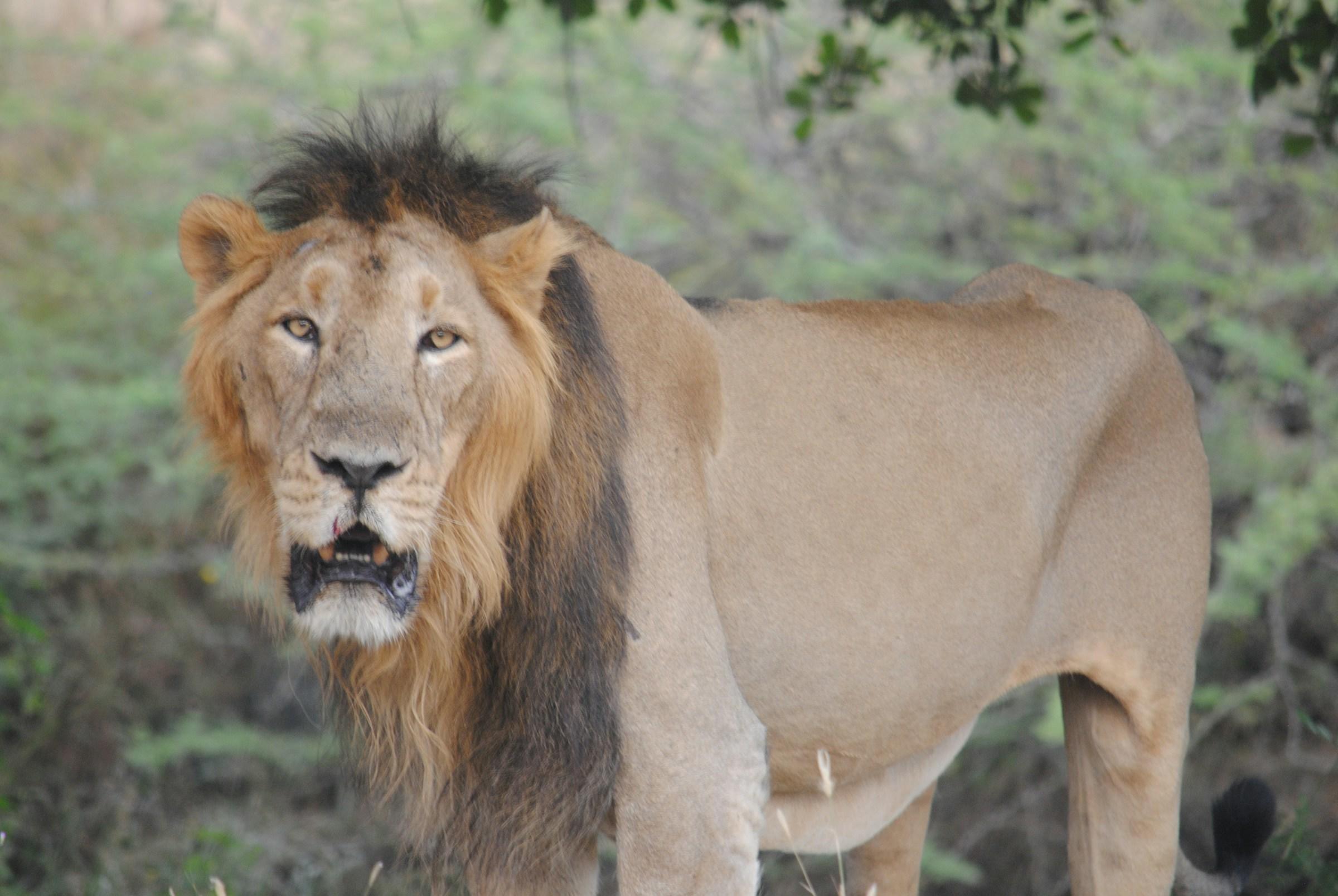Gir Wildlife Sanctuary is made up of, what else, the Gir Forests of Gujarat. It’s a sanctuary for Asiatic lions and is the only place in the world to see these amazing big cats in the wild. Nal Sarovar Bird Sanctuary is also in the same region as Sasan Gir, and the entire region abounds with rich flora and fauna, making it the “jewel of Gujarat's ecological resources.”
The immense conversation efforts over the past 90-100 years have successfully protected the land from losing many valuable species of animals and plants.
There are many different experiences to discover inside Gir Wildlife Sanctuary!

Where Is Gir National Park Located?
Gir National Park is located in Junagarh district in Gujarat state, near the Arabian Sea.
The Wildlife Sanctuary encompasses the National Park, the Gir forest, and Devalia Safari Park.
The Wildlife Sanctuary was established first in 1965 and is 1412 square km in area. Inside, the National Park was established in 1975 and is 259 square km. It also contains the fenced-off portion – the Devalia Safari Park – which is 4.12 square km.
Facts About Gir National Park
Gir National Park and Wildlife Sanctuary has a long and interesting history extending into the modern day.
The Gir Forest was a Hunting Ground
In the 19th century, the Gir Jungle was the official hunting ground for the Nawab of Junagarh, who would invite British visitors to come and trophy hunt for lions on his land. As a result, the population of the lions was decimated, and it’s estimated that only about 12 to 20 lions remained in 1913. Meanwhile, the lions were hunted to extinction everywhere else; these few lions were the only ones left on earth.
After this was brought to the Nawab of Junagarh’s attention, he declared his land to be protected and started to work with conservationists to ensure the preservation of the species.
Today, the entire park is for photos only – no hunting allowed!
Gir National Park Is Ensuring the Future of Asiatic Lions
Through dedicated conservation efforts including the formal creation of the Wildlife Sanctuary and National Park, the population of lions has grown from the dismal 12-20 to a healthy 600+ as of 2023. This census is performed by ‘The Cat Women of Gir Forest' who are members of local tribes and who are dedicated to helping to protect these amazing big cats.
The park helps increase the lion population by providing a safe haven and through a Lion Breeding Programme, which has ensured the births of about 180 cubs.
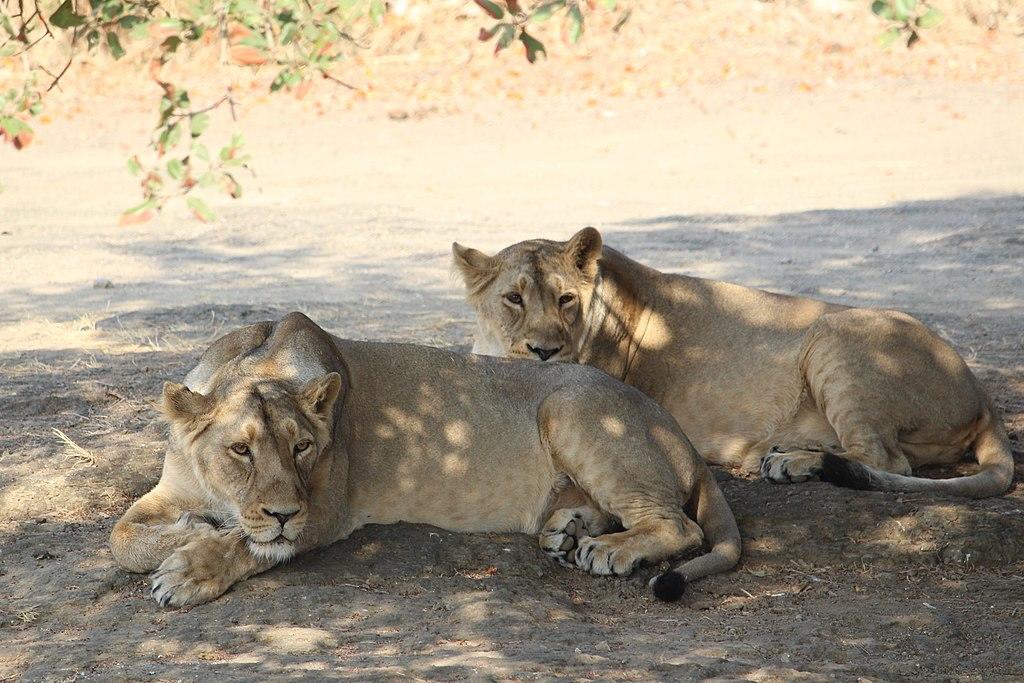
Too Many Lions?
In fact, there are now so many lions in Gir National Park that experts want to move some of them to a different park, Kuno National Park in Madhya Pradesh. The reasoning is that Asiatic lions used to be prevalent all over India before they were hunted to near extinction. But many people don’t want the lions present in other areas because they are, after all, apex predators and a danger to livestock and humans.
As it stands, the lions in Gir Jungle are loved by some, but vulnerable to attacks from others.
Maldhari people live in villages and nesses in the Gir Wildlife Sanctuary, meaning that while people may respect the lions, they must still practice caution. And, with the amount of lions in the area now, more and more prey is required to sustain the population, leaving the livestock an easy source of food for the big cats. And, while not a typical scenario, the lions have hunted people in the past.
Project Lion, established in 2020, hopes to resolve these issues with the lions, preserving their numbers while mitigating danger to locals.
Canine Distemper Virus (CDV) can transfer to big cats, which is what happened to the lions in Gir Wildlife Sanctuary in 2018, sadly leading to the death of at least 23 lions in the park.
Environmental Concerns in the Park
It’s not easy being a citizen of the Gir Jungle – for the people or the animals.
The area faces many natural resources yearly, including annual droughts, cyclones, and forest fires. The ecosystem is a delicate balance of hundreds of factors, and can easily be damaged by overgrazing of the locals’ livestock or wild grazing animals, as well as encroachment, excessive traffic from the railway which passes through the park and tourists, and resultant weed infestation that threatens native plants.
While tourism is required to fund the park and its projects, it’s a double-edged sword, because tourism also contributes to pollution, erosion, and stress to the animals.
There are also nearby mining projects that damage the environment, threatening the ecosystem.
Due to various environmental factors, many animals (including the lions from the breeding programme) have perished a few times in the past.
Poachers are also a real threat to the animals residing in the park.
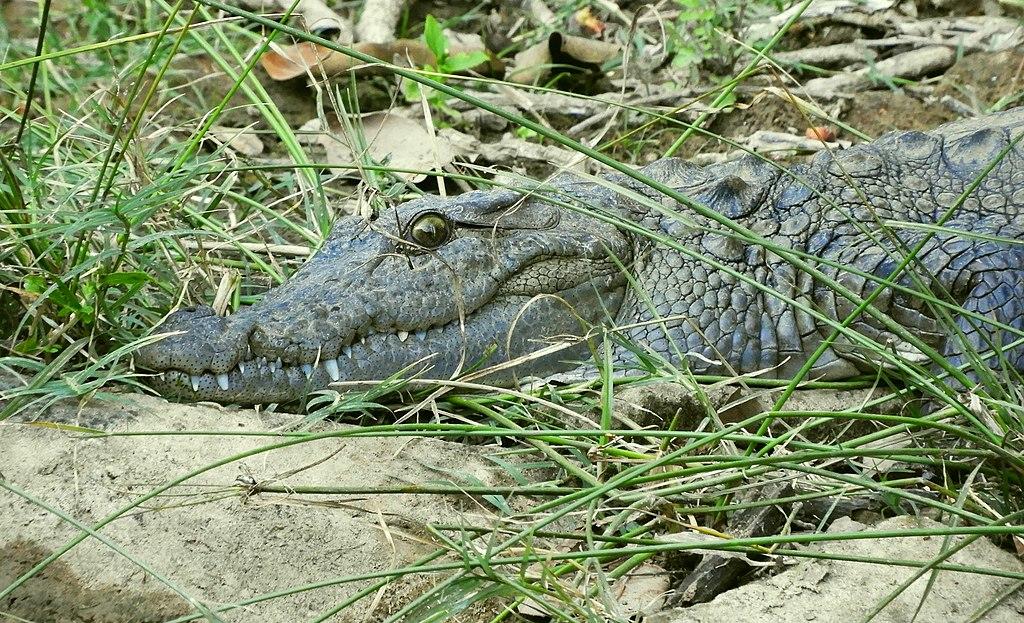
Devalia Safari Park and Gir Safari
Within the Wildlife Sanctuary, Devalia Safari Park was established as a way for tourists and wildlife lovers to be able to come and see the magnificent animals of the park without disturbing the ecosystem too much. Since only a small part of the park is dedicated to the Devalia Safari Park (also called the Interpretation Zone), the vast majority of the park is left less-touches or untouched by tourism.
Within the Devalia Safari Park, which is comprised of an area fenced off from the rest of the park to ensure the animals there remain in close proximity for viewing, you can find Sambars, Chinkaras, Wild Boars, Blue Bulls and Spotted Deer as well as lions. You are all but guaranteed to see some, if not all, of these animals on a safari through Devalia Park.
It’s also possible to take a safari trek through Gir National Park, although you are not guaranteed to see specific animals on this safari, since they have a much larger space to roam.

Animals In Gir National Park
Aside from lions, there are many other wonderful animal species living in this thriving jungle! As many as 2,375 different species of animals (mammals, reptiles, amphibians, birds, and insects) call this land home.
The Many Birds of Gir National Park
Ornithologist Dr Salim Ali believed that if the lions weren’t there to take the public’s full attention, Gir National Park would be a thrilling bird sanctuary, perhaps the most fascinating in the country! Around 300 different species of birds can be found in the Sanctuary, many of which are endangered species, such as the Dalmatian Pelican Pelecanus crispus, Greater Spotted Eagle Aquila clanga, Indian Skimmer Rynchops albicollis, Oriental White-backed Vulture Gyps bengalensis and Long-billed Vulture Gyps indicus.
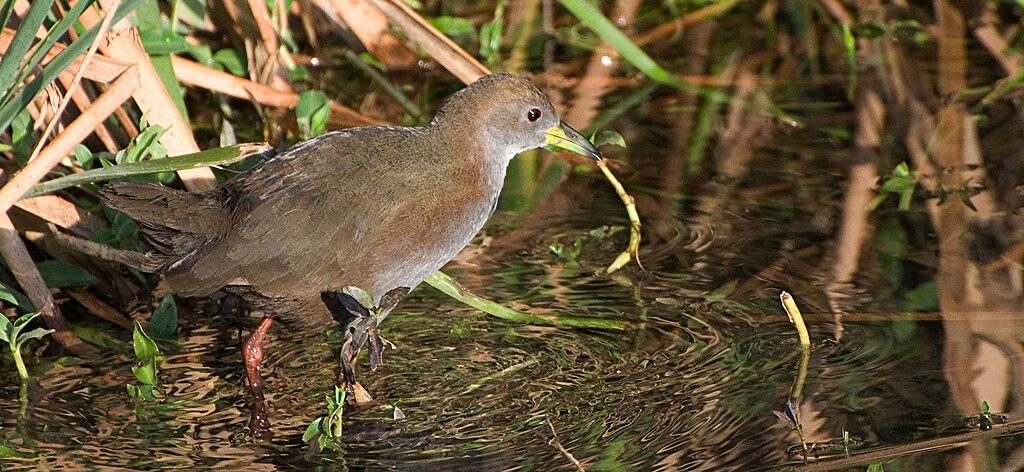
Herbivores Galore
Gir Wildlife Sanctuary is home to about 38 species of mammals, many of which are herbivorous, including chital, nilgai, sambar, four-horned antelope, chinkara, wild boar, porcupine, hare and sometimes pangolin and blackbucks.
Since the park is a wild ecosystem, these animals are members of the natural food chain, providing meals to the carnivorous members of the park. While perhaps sad to think about, in this natural habitat full of obligate carnivores, it’s the circle of life for these animals.
Other Hunters
Besides lions, Gir Wildlife Sanctuary is also home to other big cats: the Indian leopard and jungle cat, and rarely the Asiatic wildcat and rusty-spotted cat.
Other meat-eating and scavenging animals include the striped hyena, golden jackal, Bengal fox, Indian grey mongoose, ruddy mongoose, and honey badger.
There are also many carnivorous reptilians, including the mugger crocodile, marsh crocodile, Indian cobra, monitor lizard, and a few other species of snakes.
Small Animals
Throughout the park are many smaller animals, including Flap Shell Turtle, Indian Star Tortoise, Indian Wall Lizard, Common Garden Lizard, Fan Throated Lizard, Indian Chameleon, Common Keeled Skink, Snake Skink, Common Sand Boa, Red Sand Boa, Common Monitor Lizard, Verrucose Frog, Asian Commono Toad, Painted Globular Frog, and Common Skittering Frog.
Furthermore, there are more than 2,000 known types of insects in the park!
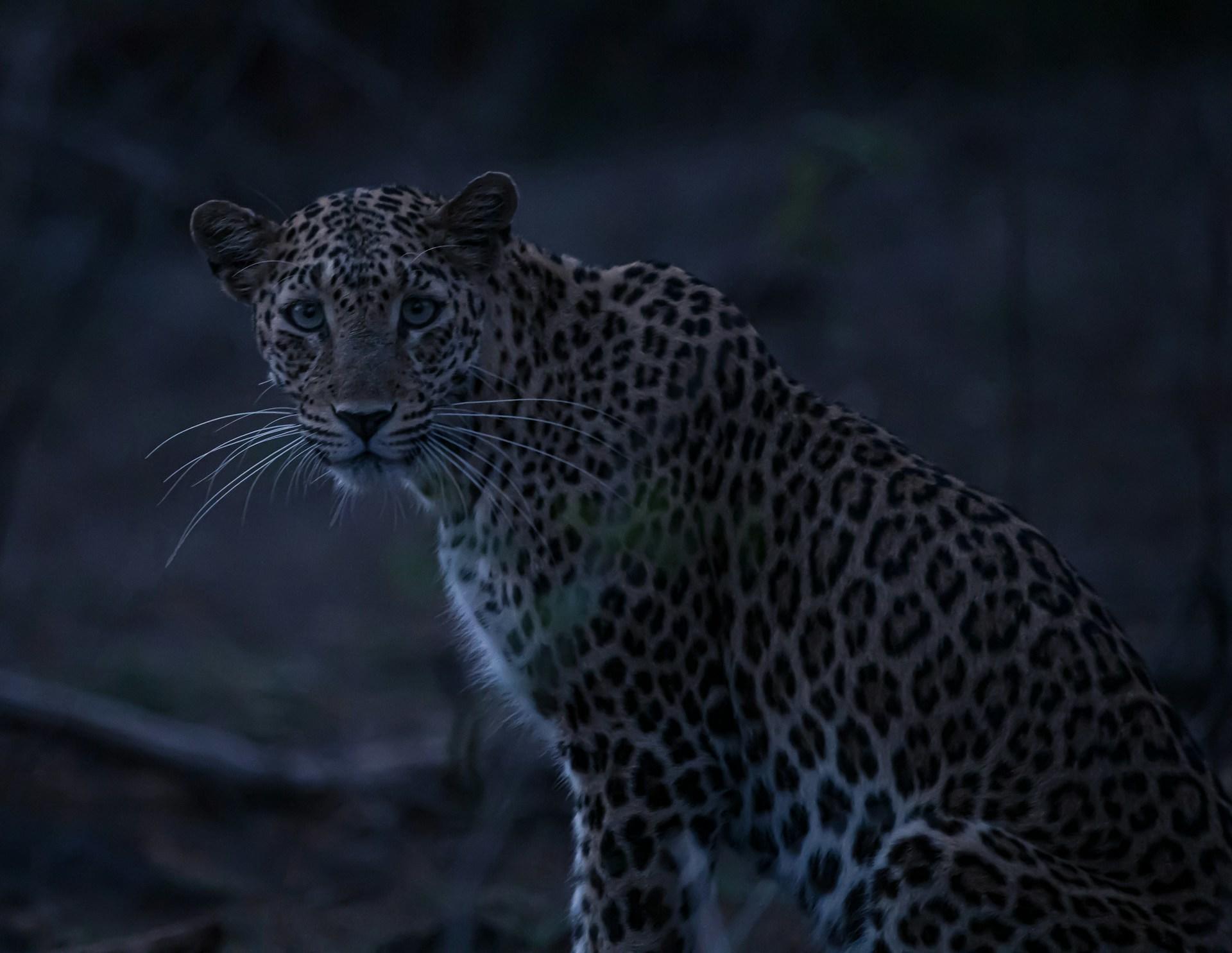
Plants Found in Gir National Park
Gir Forest is considered a very dry teak forest, meaning that it has dry scrubs, dry deciduous forests, and dry savannah forests, as opposed to a jungle such as the Amazon: full of water.
As such, only plants that thrive in dry, hot environments can survive. Several special of acacia trees can be found, as well as ber, jamun, babul, flame of the forest, zizyphus, tendu, dhak, and banyan tree.
Notable plants include karanj, umlo, amli, sirus, kalam, and charal.
Natural Resources
Gir Wildlife Sanctuary provides about 5 million (50 lakh) kgs of green grass and 123,000 (1.23 lakh) metric tonnes of fuel wood annually.
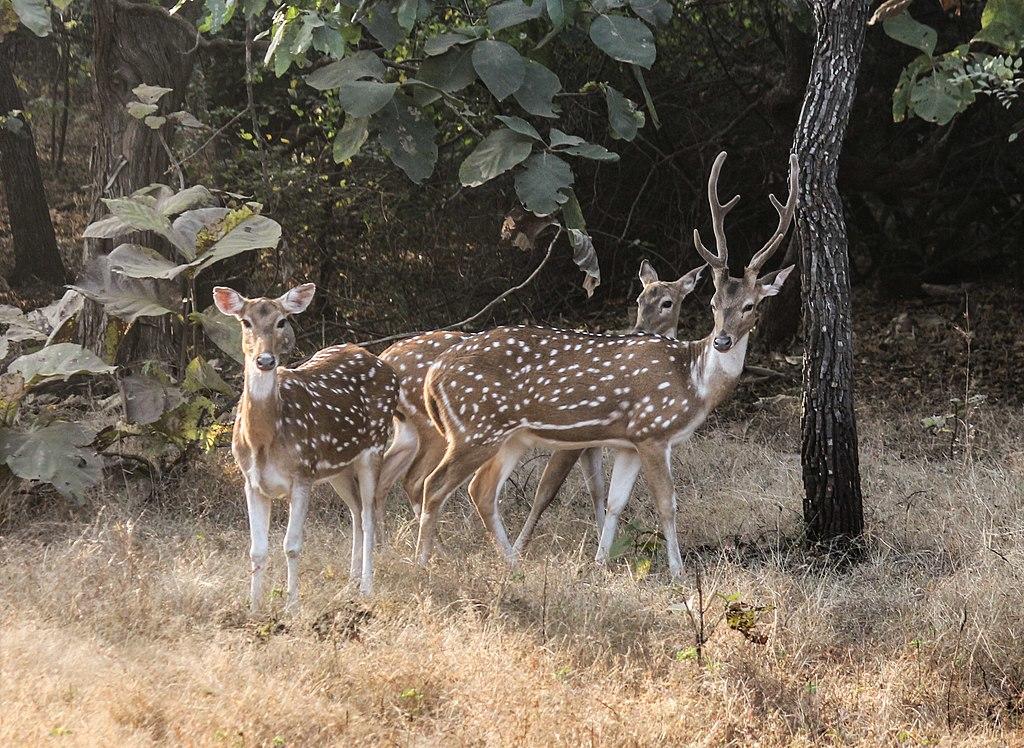
Best Time To Visit Gir National Park
Visiting in the winter, from November to March is the best time to take a trip out to Gujarat. The park is open from 16th October to 15th June for tourism, closing for monsoon season.
How to Get to Gir National Park
By Road: It’s best to take a train to Junagadh (71 km away) or Veraval (42 km away) and hire transportation or take a bus to the park.
By Train: The closest railways are Junagadh, Veraval, and Sasan Railway Station. Sasan has local trains that can take you closer to the park.
By Air: The closest airport is Keshod (54 km away).
There is plenty to see at Sasan Gir! Most people take 2-3 days to comfortably visit the park and bask in the beauty of the wildlife and nature.

